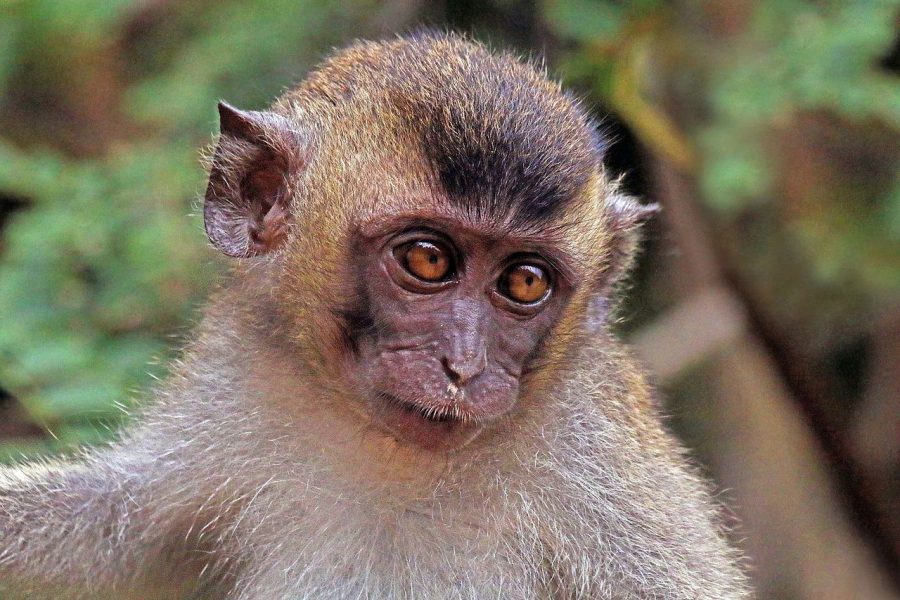Chinese Scientists Successfully Clone Primates
February 2, 2018
In 1996, Dolly the Sheep went down in history as the first mammal to be cloned from an adult somatic cell. This meant that she was the first creature in the same biological kingdom as humans to become an exact replica of another mammal. Since the time of Dolly, scientists in the field of genetics and embryology have been moving even closer towards the end goal in the cloning of mammals: humans.
Recently, scientists in China have succeeded in creating two genetically identical long-tailed macaques — primates, just like humans — called Hua Hua and Zhong Zhong, names originating from the Mandarin adjective ‘Zhonghua’, which roughly translates to ‘the Chinese’. These two monkeys, born in late December of 2017, were made from the same technique that spawned Dolly, a method called somatic cell transfer (SCNT).
This marks a first for cloning primates using this method, though in 1999 a rhesus macaque named Tetra technically became the first primate to be cloned. However, the method used on Tetra was essentially artificial twinning, whereas the SCNT technique used to create Hua Hua and Zhong Zhong involves the exact replication of an animal starting from a single body cell — a more advanced and precise technique.
This experiment was not as simple as just inserting the nucleus of a somatic cell into an egg cell with its nucleus removed; the team involved in this experiment took over three years to perfect the procedure. During this experiment, numerous attempts to clone the monkeys failed. In the final wave of the experiment (the one which yielded Hua Hua and Zhong Zhong) 79 well-developed embryos were implanted in 21 female surrogates — only two of which were successful.
The general lack of success in most of these cloning attempts, even if positive results were reached in the end, raises another question for some: is this ethical? This question becomes even more relevant considering that the cloning of these two primates represents a massive step towards the controversial, ultimate feat of the cloning process — humans. According to Dr. Leonard Zon, the director of the stem cell program at Boston Children’s Hospital, “we are closer to [cloning] humans than we’ve ever been before.”
While this question will surely become an increasingly bigger debate on its own, with new ethical framework surrounding the issue, the uses for Hua Hua, Zhong Zhong, and their future kin remain clear according to those who conducted the experiment: understanding human disease. Mumming Poo, an author on the paper detailing the results of the study conducted, notes that the Chinese government intends to “dramatically increase the size of the lab and the project”, and that within five years there should be 20 to 30 more facilities creating monkey clones.
Some of the diseases that the researchers in this experiment hope to study include autism, Parkinson’s, Alzheimer’s, and Huntington’s, all conditions which are largely outside of the boundaries of ethics in terms of studying closely in humans. Qiang Sun, a member of the Chinese Academy of Sciences Institute of Neuroscience, asserts that these cloned monkeys will be an undeniably useful model for studying numerous diseases, since many questions surrounding primate biology can possibly be laid to rest with this development.
However, there are opponents to this experiment. One of these naysayers includes Professor Robin Lovell-Badge of The Francis Crick Institute, London, who said that these techniques used to clone Hua Hua and Zhong Zhong are “a very inefficient and hazardous procedure”. He asserts that “the work in this paper is not a stepping-stone to establishing methods for obtaining live born human clones.” Considering that 77 out of the 79 attempts in the last wave of the study were failures, his concerns do raise questions that are likely to be hashed out in the coming years.
For now, Hua Hua and Zhong Zhong are doing well. They seem to be developing normally according to all initial reports, they are active and healthy, and they both seem to enjoy their Hello Kitty stuffed animal. Video of the two clones’ monkey business can be found all over YouTube, a refreshing dose of cuteness for all.



